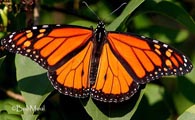Native Plants
Search for native plants by scientific name, common name or family. If you are not sure what you are looking for, try the Combination Search or our Recommended Species lists.
Apocynum cannabinum
Apocynum cannabinum L.
Indian Hemp, Prairie Dogbane, Hemp Dogbane, Dogbane
Apocynaceae (Dogbane Family)
Synonym(s): Apocynum cannabinum var. angustifolium, Apocynum cannabinum var. glaberrimum, Apocynum cannabinum var. greeneanum, Apocynum cannabinum var. hypericifolium, Apocynum cannabinum var. nemorale, Apocynum cannabinum var. pubescens, Apocynum cannabinum var. suksdorfii, Apocynum hypericifolium, Apocynum pubescens, Apocynum sibiricum, Apocynum sibiricum var. cordigerum, Apocynum sibiricum var. farwellii, Apocynum sibiricum var. salignum, Apocynum suksdorfii, Apocynum suksdorfii var. angustifolium
USDA Symbol: APCA
USDA Native Status: L48 (N), CAN (N)
The strong, erect, purplish stem of Indian-hemp rises 3-4 ft., with branches ascending from the upper part. Long oval leaves often have a white coating or bloom as found on plums. Small cream-colored flowers are clustered at branch ends or on stalks from leaf axils. Tufted seeds form in spindle-shaped pods.
Women of some tribes rolled dogbane stem fibres on their legs to make fine thread, said to be finer and stronger than the best cotton thread. It was used for sewing and for making twine, nets, fabric and bowstrings. A number of varieties occur across the continent. This species can become a serious weed as it is aggressive and difficult to control.
Once thought to be a larval food for Monarch butterflies, research has shown that while adult female Monarchs will occasionally oviposit on this species, their offspring will not mature on it.
Plant Characteristics
Duration: PerennialHabit: Herb
Root Type: Tap
Fruit Type: Follicle
Size Notes: Up to about 4 feet tall.
Leaf: Green
Bloom Information
Bloom Color: White , Green , BrownBloom Time: May , Jun , Jul , Aug , Sep
Distribution
USA: AL , AR , AZ , CA , CO , CT , DC , DE , FL , GA , IA , ID , IL , IN , KS , KY , LA , MA , MD , ME , MI , MN , MO , MS , MT , NC , ND , NE , NH , NJ , NM , NV , NY , OH , OK , OR , PA , RI , SC , SD , TN , TX , UT , VA , VT , WA , WI , WV , WYCanada: NB , NL , NS , ON , QC
Native Distribution: Throughout the U.S.; scattered in Canada
Native Habitat: Roadsides; thickets; fields; lakeshores; waterways; disturbed areas
Growing Conditions
Water Use: HighLight Requirement: Part Shade
Soil Moisture: Moist
CaCO3 Tolerance: Medium
Soil Description: Various soils.
Conditions Comments: A number of varieties occur across the continent. This species can become a serious weed as it is aggressive and difficult to control. Use only in large areas.
Benefit
Use Food: Chewing gum from hardened sap.Use Medicinal: Amerindians used berries and root in weak teas for heart ailments, diuretic. Induces sweating and vomiting; laxative. and as wash to prevent hair loss. Used in headaches with sluggish bowels, liver disease, indigestion, rheumatism. Chickasaws and Choctaws chewed fresh root, swallowing only juice as a specific for syphilis.
Use Other: Widely used among aboriginal people for cordage. Very sturdy bast fibers.
Warning: POISONOUS PARTS: All parts, fresh or dry. Highly Toxic, May be Fatal if eaten. Symptom: Cardiac arrest. Toxic Principle: Resins and cardiac glycosides.
Conspicuous Flowers: yes
Nectar Source: yes
Poisonous: yes
Value to Beneficial Insects
Supports Conservation Biological ControlThis information was provided by the Pollinator Program at The Xerces Society for Invertebrate Conservation.
Butterflies and Moths of North America (BAMONA)
|
Monarch (Danaus plexippus)  Adult Food Source |
Mr. Smarty Plants says
Native host plants for Painted Lady Butterfly
June 01, 2006
I am looking for host plants for the Painted Lady Butterfly that I can plant in my school's (I am a teacher) native plant/butterfly garden. As part of the curriculum, each spring the 1st grade raises...
view the full question and answer
National Wetland Indicator Status
| Region: | AGCP | AK | AW | CB | EMP | GP | HI | MW | NCNE | WMVE |
| Status: | FACU | FAC | FACU | FAC | FAC | FAC | FAC |
From the National Organizations Directory
According to the species list provided by Affiliate Organizations, this plant is on display at the following locations:Santa Barbara Botanic Garden - Santa Barbara, CA
Bibliography
Bibref 610 - Edible wild plants of the prairie : an ethnobotanical guide (1987) Kindscher, K.Bibref 417 - Field Guide to Medicinal Plants and Herbs of Eastern and Central North America (2000) Foster, S. & J. A. Duke
Bibref 1186 - Field Guide to Moths of Eastern North America (2005) Covell, C.V., Jr.
Bibref 1185 - Field Guide to Western Butterflies (Peterson Field Guides) (1999) Opler, P.A. and A.B. Wright
Bibref 946 - Gardening with Prairie Plants: How to Create Beautiful Native Landscapes (2002) Wasowski, Sally
Bibref 1218 - Tending the Wild: Native American Knowledge and the Management of California's Natural Resources (2006) Anderson, M. Kat
Bibref 1294 - The Midwestern Native Garden: Native Alternatives to Nonnative Flowers and Plants An Illustrated Guide (2011) Adelman, Charlotte and Schwartz, Bernard L.
Search More Titles in Bibliography
Web Reference
Webref 30 - Calflora (2018) CalfloraWebref 23 - Southwest Environmental Information Network (2009) SEINet - Arizona Chapter
Additional resources
USDA: Find Apocynum cannabinum in USDA PlantsFNA: Find Apocynum cannabinum in the Flora of North America (if available)
Google: Search Google for Apocynum cannabinum
Metadata
Record Modified: 2022-11-21Research By: TWC Staff